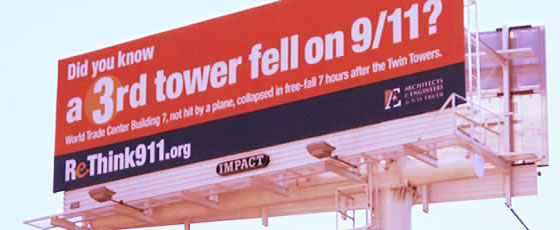
Advertisement
A former National Institute of Standards and Technology (NIST) employee has stepped forward to criticize the government agency for ignoring scientific errors found in its report regarding the collapse of World Trade Center Building 7. Peter Ketcham spent almost 15 years working with NIST and has described the significantly flawed methods used during the investigation. Ketcham wrote a letter regarding the issue which was published in the November 2016 of Europhysics News magazine. In August of 2008, the magazine had previously published a report examining the Building 7 collapse in detail.
Ketcham felt compelled to speak out about the NIST WTC 7 investigation after reading the initial August 2008 report. The original report concludes that the building collapsed due to structural failure caused by fires and debris from the collapse of the Twin Towers. The problem with the initial report is that the NIST couldn’t perform a definitive study under the common standards of the National Fire Protection Association — because it lacked the physical evidence.
Structural steel started to be removed and melted down just days after the incident, some beams were even stolen. NIST had access to only 150 smaller pieces of steel, known as coupons, which were cut from the whole sections of structural steel beams. With a lack of remaining evidence, the NIST generated computer models of the buildings structure to test collapse theories. Fires were simulated in an attempt to recreate the conditions just prior to failure. The conclusions of the report are still being questioned 15 years after the attacks. Thousands of physicists, engineers, and architects have formed the group Architects and Engineers for 9/11 Truth.
The inconclusive methods used for the NIST report led Ketcham to speak out after viewing several documentaries. Ketcham noted that he was furious with himself for not knowing, and furious at NIST for covering up the issue. “The NIST I knew was intellectually open, non-defensive, and willing to consider competing explanations. The more I investigated, the more apparent it became that NIST had reached a predetermined conclusion by ignoring, dismissing, and denying the evidence. Among the most egregious examples is the explanation for the collapse of WTC 7 as an elaborate sequence of unlikely events culminating in the almost symmetrical total collapse of a steel-frame building into its own footprint at free-fall acceleration,” Ketcham wrote.
The initial cause of the collapse is under heavy scrutiny because researchers proved that the NIST did not accurately model the steel’s connection at the reported point of initial failure. Multiple smaller design elements were absent from the computer model, which shows the failed beam twisting in ways different from the physical properties of the steel’s connection.
Sources:
Submit a correction >>
This article may contain statements that reflect the opinion of the author
Advertisement
Advertisements















